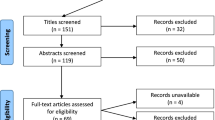Abstract
Trying to predict the future of a quickly developing domain such as navigational surgery always bares a certain risk. One easily faces the danger of wrongly estimating current trends and developments, and within in a few years being proven as wrong as Thomas Watson, the former chairman of IBM. In 1943, Mr. Watson was convinced that ≫there is a potential for maybe five computers worldwide≪. Nevertheless, we can look back at almost 10 years of computer-assisted orthopaedic surgery and identify a number of weak points which still exist. We can observe numerous concepts and ideas that have recently been developed for, or are currently being introduced into CAOS. These observations surely suggest certain directions for speculation about what the future of CAOS may be. Conjuring up science fiction will definitely not be the goal of this chapter, since such forecasts often turn out to remain ≫visions≪ even after 10 or 20 years, but rather an overview shall be provided that estimates which developments may become reality within the next years and will be usable in the OR on a routine basis.
Access this chapter
Tax calculation will be finalised at checkout
Purchases are for personal use only
Preview
Unable to display preview. Download preview PDF.
Similar content being viewed by others
References
Amin DV, Kanade T, DiGioia AM, Jaramaz B, Nikou C, Labarca RS (2001) Ultrasound-based registration of the pelvic bone surface for surgical navigation. Comput Aided Surg 6(1):48,2001.
Amiot LP, Labelle H, DeGuise JA, Sati M, Brodeur P, Rivard CH (1995) Computer-assisted pedicle screw fixation — a feasibility study.Spine 20: 1208–1212.
Berlemann U, Langlotz F, Langlotz U, Nolte L-P (1997) Computerassistierte Orthopädische Chirurgie (CAOS) - Von der Pedikelschrauben-insertion zu weiteren Applikationen. Orthopäde 26:463–469.
Blackwell M, Morgan F, DiGioia AM III (1998) Augmented reality and its future in orthopaedics. Clin Orthop 354:111–122.
Digioia AM III, Jaramaz B, Nikou C, LaBarca RS, Moody JE, Colgan BD (2000) Surgical navigation for total hip replacement with the use of HipNav. Oper Tech Orthop 10:3–8.
Digioia AM III, Jaramaz B, Plakseychuk AY et al. (2002) Comparison of a mechanical acetabular alignment guide with computer placement of the socket. J Arthroplasty 17:359–364.
Friets EM, Strohbehn JW, Roberts DW (1995) Curvature-based nonfiducial registration for the stereotactic operating microscope. IEEE Trans Biomed End 42:867–878.
Hamadeh A, Lavallée S, Cinquin P (1998) Automated 3-dimensional computed tomographic and fluoroscopic image registration. Comput Aided Surg 3:11–19.
Heeckt R, Rühl M, Buchhorn G et al. (1999) Computer Assisted Surgical Planning and Robotics mit dem CASPAR-System. In: Jerosch J, Nicol K, Peikenkamp K (Hrsg) Rechnergestiitzte Verfahren in Orthopädie und Unfallchirurgie. Steinkopff, Darmstadt, S 414–433.
Hill DL, Hawkes DJ, Crossman JE et al. (1991) Registration of MR and CT images for skull base surgery using point-like anatomical features. Br J Radiol 64:1030–1035.
Hofstetter R, Slomczykowski M, Sati M, Nolte L-P (1999) Fluoroscopy as an imaging means for computer-assisted surgical navigation. Comput Aided Surg 4:65–76.
Jacob AL, Messmer P, Kaim A, Suhm N, Regazzoni P, Baumann B (2000) A whole-body registration-free navigation system for image-guided surgery and interventional radiology. Invest Radiol May 35:279–288.
Kalfas IH, Kormos DW, Murphy MA et al. (1995) Application of frameless stereotaxy to pedicle screw fixation of the spine. J Neurosurg 83: 641–647.
Langlotz F, Stucki M, Bächler R, Scheer C, Ganz R, Berlemann U, Nolte L-P (1997) The first twelve cases of computer assisted periacetabular osteotomy. Comput Aided Surg 2:317–326.
Langlotz U, Grützner PA, Bernsmann K et al. (2003) A hybrid CT-free navigation system for acetabular cup placement. J Arthroplasty (submitted).
Li Q, Zamorano L, Jiang Z, Gong JX, Pandya A, Perez R, Diaz F (1999) Effect of optical digitizer selection on the application accuracy of a surgical localization system - a quantitative comparison between the OPTOTRAK and flashpoint tracking systems. Comput Aided Surg 4: 314–321.
Maurer CR, Gaston RP, Hill DLG et al. (1999) AcouStick:AtrackedA-mode ultrasonography system for registration in image-guided surgery. In: Taylor C, Colchester A (eds) Medical image computing and computer-assisted intervention – MICCAI’99.Springer, Berlin Heidelberg New York Tokyo, pp 953–962.
Merloz P, Tonetti J, Pittet L et al. (1999) Computer-assisted spine surgery. Comput Aided Surg 3:297–305.
Messmer P, Jacob AL, Fries E et al. (2001) Technologieintegration und Prozessmanagement-Konzept und Implementierung einer neuarti-gen Plattform für einzeitige Diagnostik und Therapie des akut Kranken und Verletzten sowie für elektive computerassistierte Chirurgie (CAS). Unfallchirurg 104:1025–1030.
Moche M, Busse H, Dannenberg C et al. (2001) Fusion von MRT-, fMRT-und intraoperativen MRT-Daten-Methode und klinische Bedeutung am Beispiel neurochirurgischer lnterventionen.Radiologe 41:993–1000.
Nolte L-P, Visarius H, Langlotz F, Schwarzenbach O, Berlemann U, Rohrer U (1996) Computer assisted spine surgery - a generalized concept and early clinical experiences. Int Soc Comput Aided Surg 3:1–6.
Tonetti J, Carrat L, Blendea S, Merloz P, Jroccaz J, Lavallée S, Chirossel J-P (2001) Clinical results of percutaneous pelvic surgery - computer assisted surgery using ultrasound compared to standard fluoroscopy. Comput Aided Surg 6:204–211.
WallnyT, Klose J, Steffny G, Schulze-Bertelsbeck D, Perlick L, Schumpe G (1999) Dreidimensionaler Ultraschall und intraoperative Navigation: Ein neuer Einsatz des Ultraschalltopometers bei Umstellungsosteo-tomie des proximalen Femurs. Ultraschall Med 20:158–160.
Wörn H, Hoppe H (2001) Augmented reality in the operating theatre of the future. In: Niessen WJ, Viergever MA (eds) Medical image computing and computer-assisted intervention — MICCAI 2001. Springer, Berlin Heidelberg New York Tokyo, pp 1195–1196.
Zamorano L, Jiang Z, Kadi AM (1994) Computer-assisted neurosurgery system: Wayne State University hardware and software configuration. Comp Med Imaging Graph 18:257–271.
Rights and permissions
Copyright information
© 2004 Springer-Verlag Berlin Heidelberg
About this chapter
Cite this chapter
Langlotz, F. (2004). Navigation —Where do we go from here?. In: Navigation and Robotics in Total Joint and Spine Surgery. Springer, Berlin, Heidelberg. https://doi.org/10.1007/978-3-642-59290-4_71
Download citation
DOI: https://doi.org/10.1007/978-3-642-59290-4_71
Publisher Name: Springer, Berlin, Heidelberg
Print ISBN: 978-3-642-63922-7
Online ISBN: 978-3-642-59290-4
eBook Packages: Springer Book Archive




